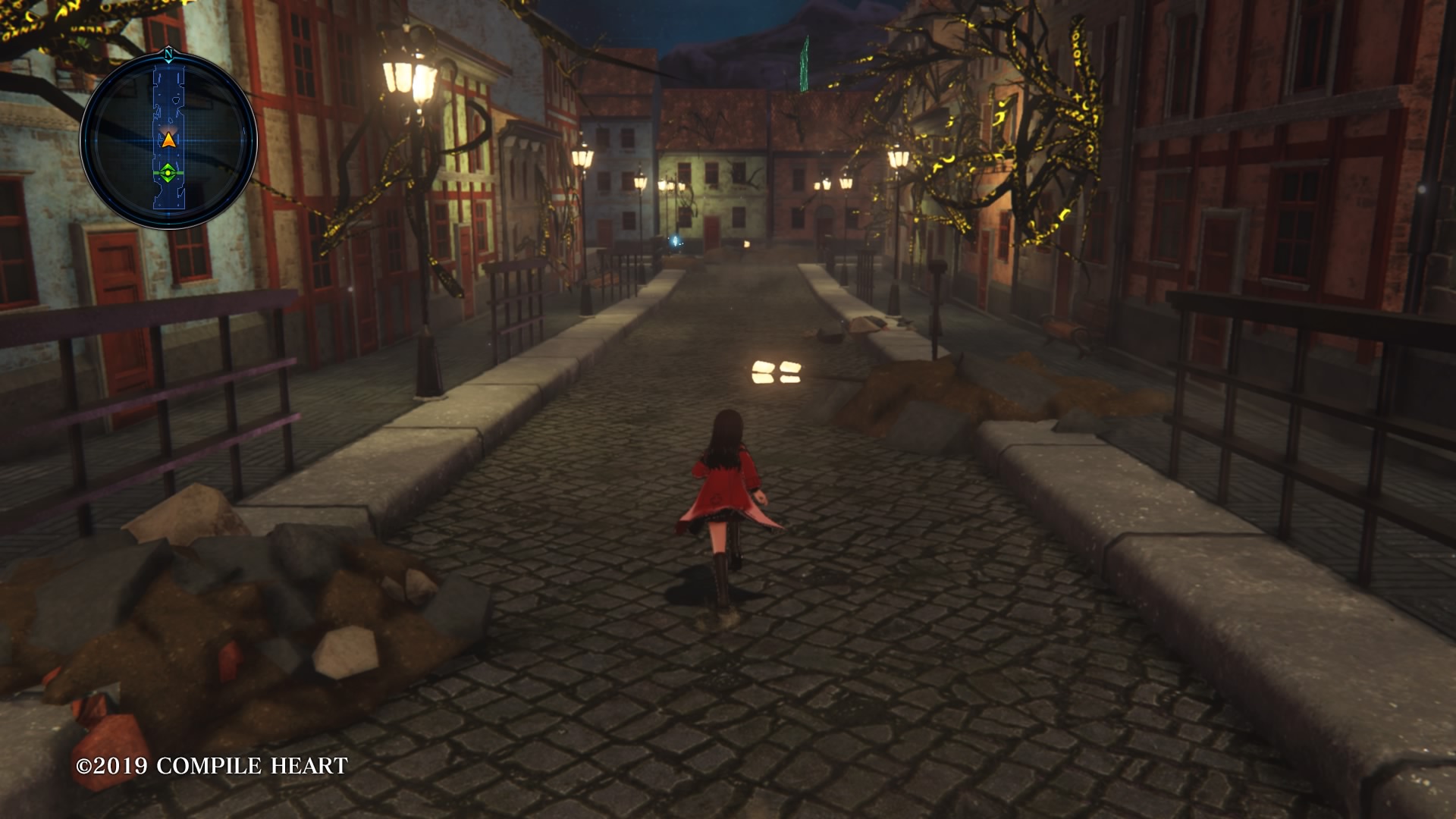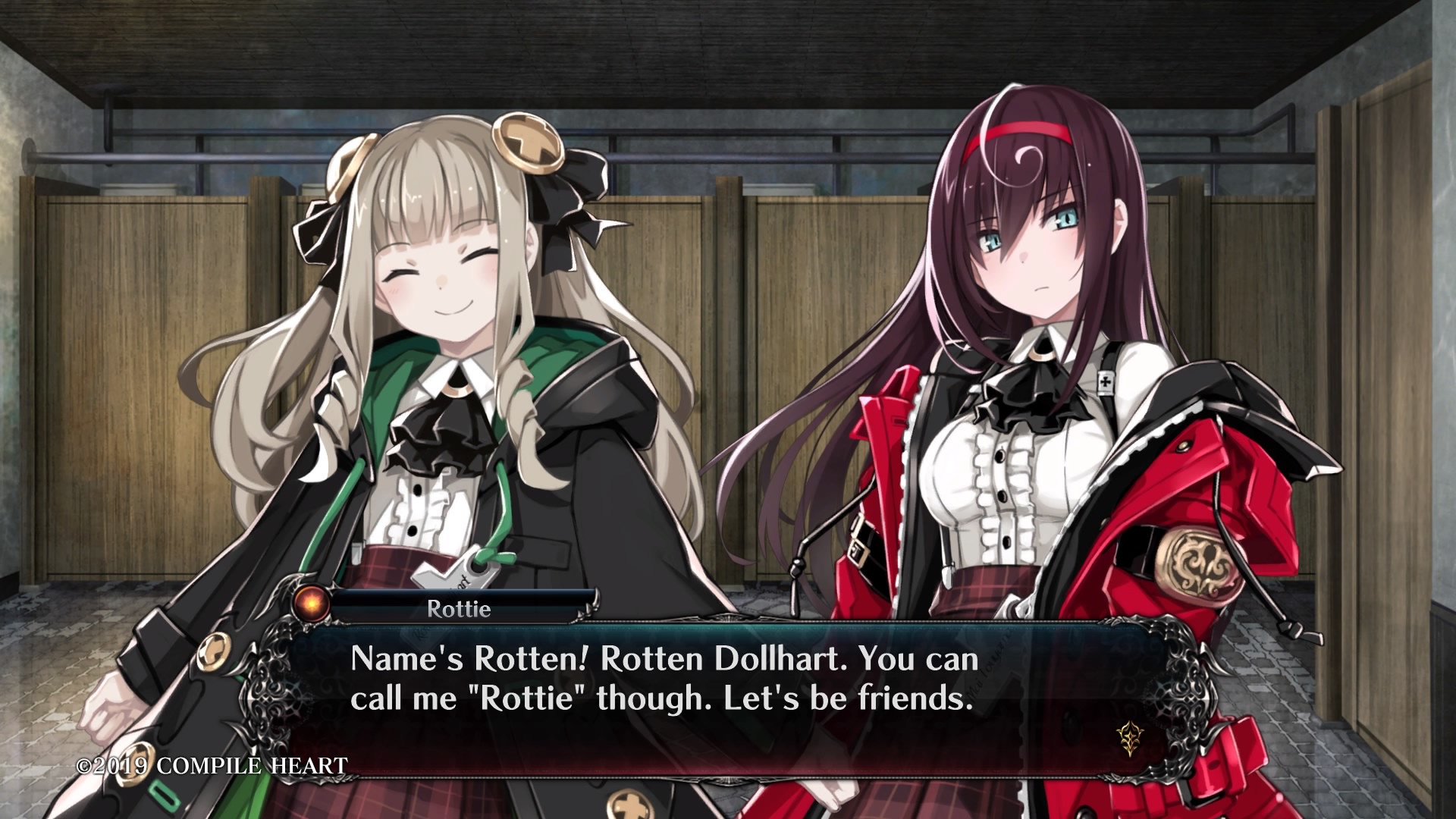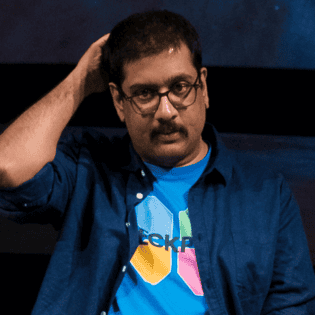Platforms:
PS4, PC
Released:
August 19, 2020
Publisher:
Idea Factory
Developers:
Idea Factory, Compile Heart
The sequel to 2019’s Death end re;Quest has released, throwing players into a small, spooky town situated within the mountains. Protagonist Mai Toyama looks to escape her traumatic past whilst searching for her lost sister in her last known whereabouts. The game is developed by prolific JRPG developer and publisher, Idea Factory, alongside their subsidiary Compile Heart. Although I struggle to view this as Idea Factory’s best work.
Death end re;Quest 2 is a terrible game with a terrific battle system. It’s a horror JRPG, and comes with a lot of disgusting tropes endemic to the genre, like sensationalised depictions of sexual assault and domestic violence. The story meanders almost as soon as it begins, with a lot of repetition making the game feel bloated despite only having a 30-hour runtime. The characters are all walking clichés, one of whom has maybe the silliest name I’ve ever encountered in a video game. But despite myself, I fell in love with the innovative battle system that lets you cartoonishly knock enemies into each other to deal damage. This alone almost made up for all the rest of the game’s shortcomings. Almost. There’s a lot of shortcomings.
There’s a lot of gratuitous violence in the story, so it was a smart choice that the game is a visual novel with barely any cutscenes. Not being able to see the horror – but still read and hear it – softens the blow somewhat. The game is separated into day and night sections, with the daytime purely being a menu containing a list of optional scenes that you view, one by one. At night, you can explore the town and take part in turn-based battles.
Our protagonist is Mai, a tech-loving teen who, five minutes into the story, murders her abusive father in a fit of rage. She is promptly sent to a fancy all-girls boarding school for orphans, in a small town where nobody knows what computers or smartphones are. It’s a ludicrously contrived premise that’s the perfect setup for a series of mysterious killings to occur, and it’s up to Mai to solve them.

The opening scenes set the uncomfortable tone the game is going for, then the game absolutely smashes that tone with bright and peppy visual novel sections. These lighthearted scenes feature other students but offer very little, other than mild character development and a bit of money. Once they’re done you can “end the day”, which leads to the nighttime sections, which leads to another tonal shift. You explore this dilapidated town crawling with eldritch monsters, some of whom you must run away from or face an instant game over. Just walking around can be tense. But then you enter a turn-based battle, with elaborate anime-style action and literal pinball noises when enemies bounce against each other. The monsters aren’t so scary when you know their defense stats and elemental weaknesses.
The game’s constant tonal whiplash quickly becomes exhausting. Making a full-length horror RPG is a novel idea, so kudos to the developer for trying something new. I just don’t think flipping the horror on and off was the best way to go about it. Our teen heroes could face a traumatic incident one night, only to act like nothing happened the next morning during the optional scenes. The game’s various elements never quite gel together.

Helping Mai on her quest are her two best friends, one of whom is named Rotten Dollhart. Rotten Dollhart is a cheery girl whose upbeat, bubbly personality is the perfect foil for sullen, antisocial Mai. Rotten Dollhart’s mother (Miss Dollhart) is the headmistress, so Rotten Dollhart’s perspective as the only student relatively free from trauma leads her to be a caring presence in the school. Rotten Dollhart is a kind soul, and is one of the most endearing characters in the game. I’ve played the game to completion, and not once does Rotten Dollhart’s ridiculous name carry any kind of meaning about her role in the plot. Rounding out the trio is a girl named Liliana Pinnata, who – and I’ve played the entire game – never once expels candy after getting hit by an enemy. This is a horror game.
I could go on forever about how much I disliked the non-combat parts of this game (and I kind of already have), but let me run down a few more things. I was pleasantly surprised to see multiple queer couples amongst the students at the school, but each of these relationships turns out to be abusive to some degree. While it’s a common horror trope for characters to make poor decisions that put themselves in danger, the game’s length means that Mai, Liliana and Rotten Dollhart make inane decisions over and over again that often result in not much story progress. And since this is a JRPG, awkward tropes of that genre rear their ugly heads as well. We here at Checkpoint have made our opinions known about the sexualisation of underage girls in Japanese games, and DERQ2 (as I’ll call it) certainly has its fair share. I truly didn’t know that breast jiggle physics was still a thing games did.
Now let’s get to the combat, which is (mostly) great! It’s turn based, but a character can move anywhere and perform up to three actions each turn. If you want to whack an enemy, then heal an ally, then defend against the next attack, you easily can. But the best part is when you perform an attack capable of a Knockback. A Knockback hits every enemy within the attack’s range and, as I’ve mentioned before, flings them around the battlefield like grotesque pool balls. Various patches on the ground give stat buffs if you step on them, or if you knock an enemy into them. Knock an enemy at another party member and they will perform a powerful Knock Blow, piffing the poor monster around with renewed momentum. Knockbacks never get boring, especially when a single well-angled hit can ricochet one enemy into all the others, killing them all before they can take their turn. It’s an ingenious system that makes every battle something to look forward to. Completely inappropriate for a horror game, but ingenious nonetheless.
Unfortunately, even battles let the game down towards the end, when most enemies have gigantic pools of health and can kill a character in 1 or 2 hits. Tedium and repetition are indestructible waves permeating Death end re;Quest 2, leaving no survivors. Not even a really neat combat system can withstand their might.
4
Mediocre
Positive:
- Combat is thrilling
- There aren't many other games like this
- If you're not a fan of horror, don't worry, there's not much here
Negative:
- The story contains some of the worst clichés from horror and JRPGs
- The game's tone is all over the place
- Rotten Dollhart is a bad name for a person
Death end re;Quest 2 is an experiment, which by itself is a great thing. It attempts to hybridise two genres of games that don’t normally share the limelight. But in the end, there is very little cohesion between the game’s two halves. It’s a JRPG with poor character development, and it’s a horror game that isn’t all that scary. And apart from the amazing battles, the game is frustrating on multiple fronts. There are parts of Death end re;Quest 2 that could be salvaged and made part of a better game, unfortunately that doesn’t amend all the shortcomings that are prolific within this title.





